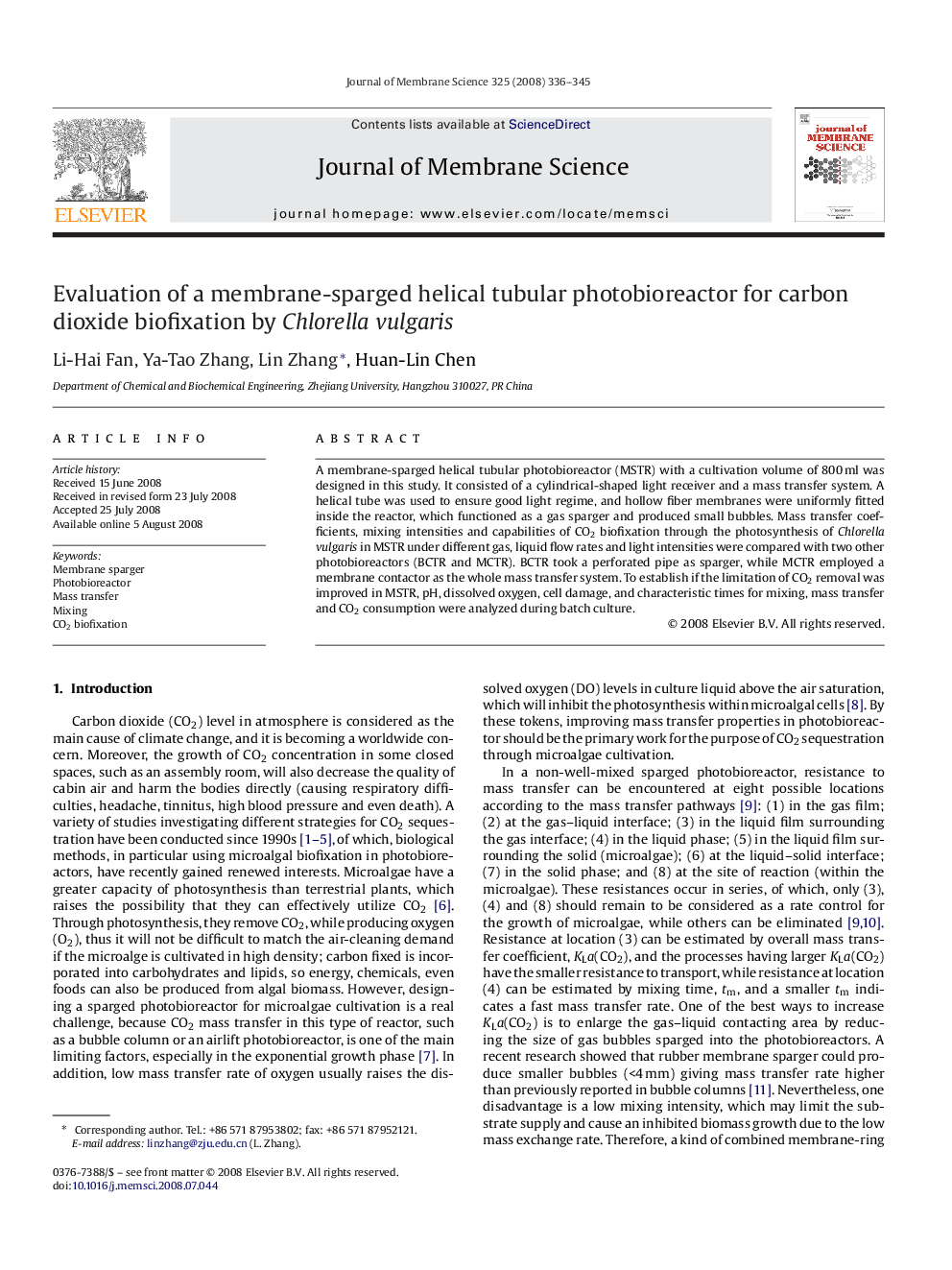| Article ID | Journal | Published Year | Pages | File Type |
|---|---|---|---|---|
| 637740 | Journal of Membrane Science | 2008 | 10 Pages |
A membrane-sparged helical tubular photobioreactor (MSTR) with a cultivation volume of 800 ml was designed in this study. It consisted of a cylindrical-shaped light receiver and a mass transfer system. A helical tube was used to ensure good light regime, and hollow fiber membranes were uniformly fitted inside the reactor, which functioned as a gas sparger and produced small bubbles. Mass transfer coefficients, mixing intensities and capabilities of CO2 biofixation through the photosynthesis of Chlorella vulgaris in MSTR under different gas, liquid flow rates and light intensities were compared with two other photobioreactors (BCTR and MCTR). BCTR took a perforated pipe as sparger, while MCTR employed a membrane contactor as the whole mass transfer system. To establish if the limitation of CO2 removal was improved in MSTR, pH, dissolved oxygen, cell damage, and characteristic times for mixing, mass transfer and CO2 consumption were analyzed during batch culture.
